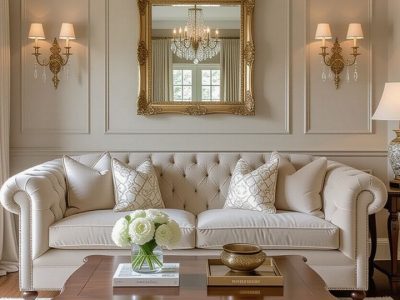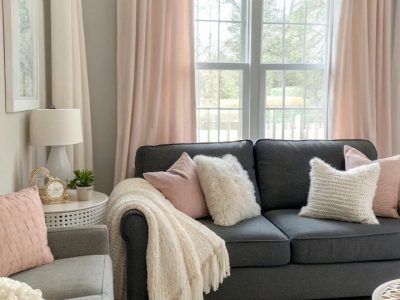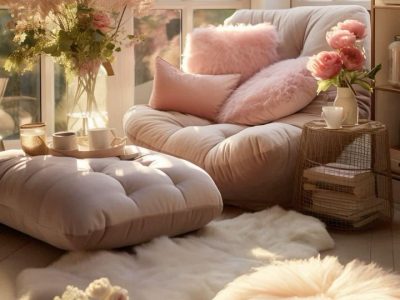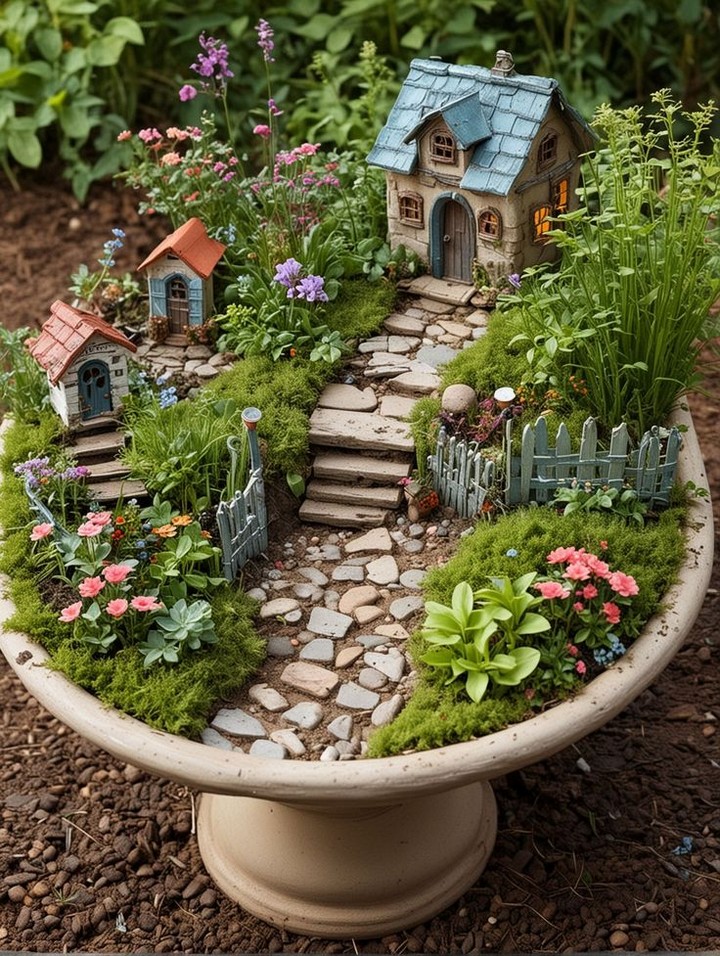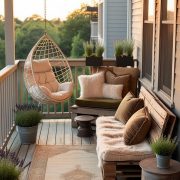For centuries, Chinese design has captivated the world with its perfect harmony of aesthetics, functionality, and philosophical depth. Among the varied color palettes in traditional Chinese decor, green stands out as particularly significant embodying growth, harmony, and balance while connecting interior spaces to the natural world.
Green in Chinese culture represents much more than just a color preference. It symbolizes renewal, vitality, and prosperity concepts deeply rooted in Chinese philosophy and feng shui practices. When incorporated into home decor, green Chinese elements create spaces that feel both grounded and uplifting, traditional yet timeless.
This comprehensive guide explores 34 elegant green Chinese decor styles from subtle accents to bold statements that can transform your living spaces with Eastern-inspired sophistication. Whether you’re planning a complete home redesign or simply looking to incorporate cultural accents into your existing decor, these ideas will help you create harmonious environments that honor Chinese design principles while expressing your personal aesthetic.
Jade Green: The Quintessential Chinese Green
1. Jade Wall Panels
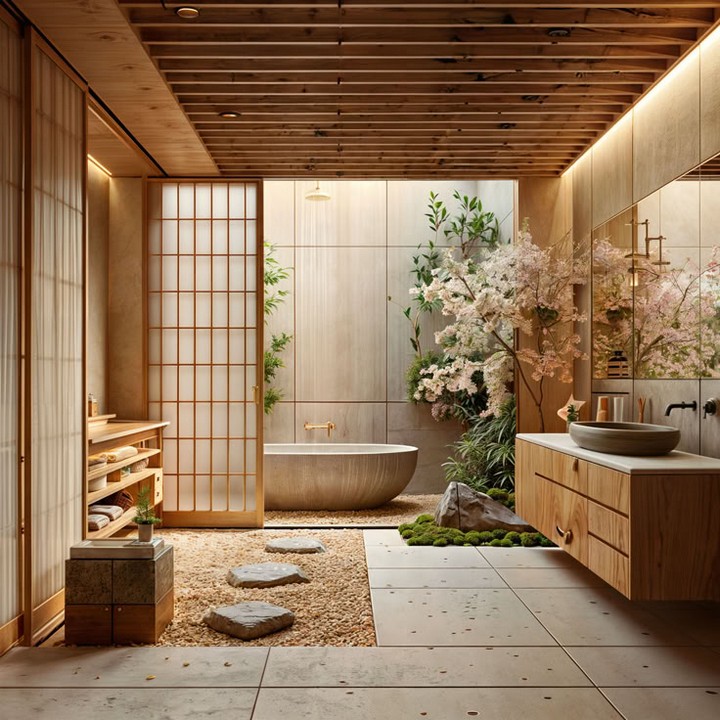
Few materials are more revered in Chinese culture than jade, which has been treasured for over 9,000 years. Wall panels featuring carved jade or jade-green finishes create stunning focal points in living spaces or entryways. These panels often incorporate traditional motifs such as dragons, phoenixes, or cloud patterns, bringing cultural significance alongside visual impact.
Traditional jade panels feature intricate relief carvings, while contemporary interpretations might use jade-colored glass or lacquer for a sleeker aesthetic. When illuminated thoughtfully, these panels create dramatic shadow play that adds depth to your space.
2. Imperial Jade Ceramics
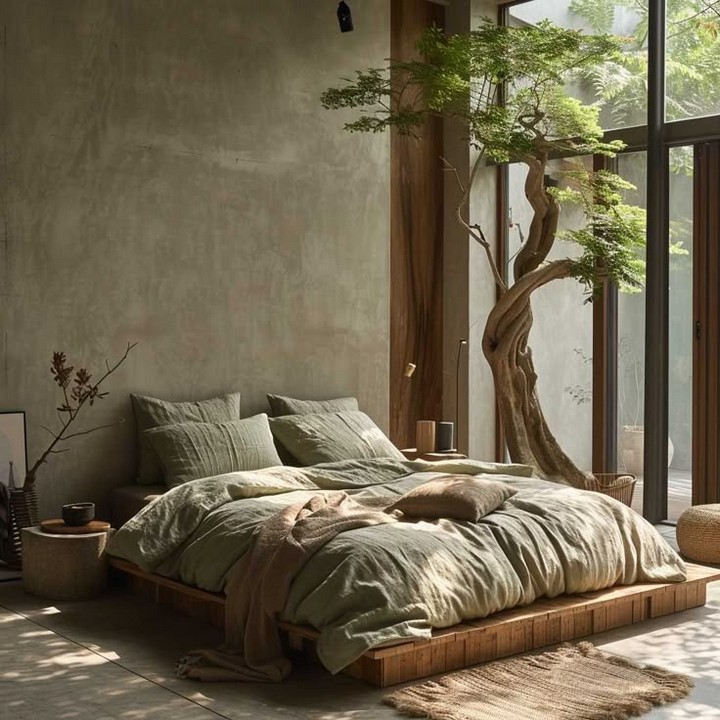
The distinctive celadon glazes of the Song Dynasty represent one of China’s most significant contributions to ceramic art. These jade-green porcelains with their subtle, translucent quality bring elegance to any display shelf or dining table.
Modern interpretations of these imperial jade ceramics range from faithful reproductions of ancient pieces to contemporary forms that maintain the traditional glaze colors. Grouped in odd numbers (considered auspicious in Chinese tradition), these pieces create sophisticated vignettes that draw the eye.
3. Jade-Accented Furniture

Furniture inlaid with jade or jade-colored stone creates luxurious focal points in traditionally-inspired spaces. Consider a console table with jade medallion inlays or cabinet hardware featuring jade elements.
The contrast between rich wood tones and cool jade accents exemplifies the balanced opposites so valued in Chinese design philosophy. These pieces work particularly well in entryways or formal living spaces where they can be properly appreciated as artistic statements.
4. Jade Screen Dividers
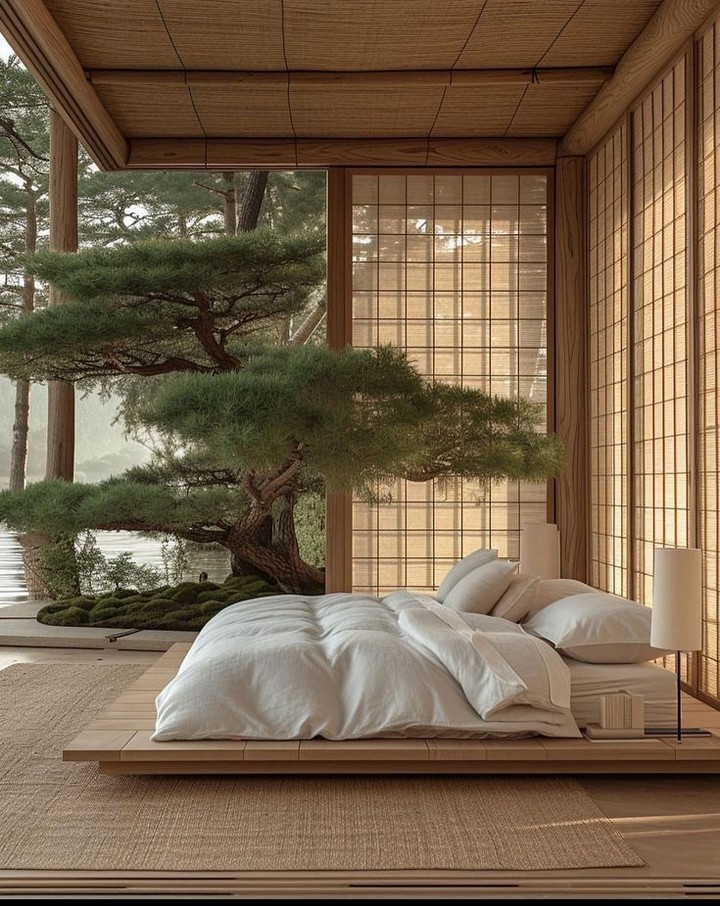
Screen dividers hold special significance in Chinese interior design, traditionally used to direct energy flow and create intimate spaces within larger rooms. Jade green screens with carved wooden frames create architectural interest while referencing classical Chinese interiors.
Modern interpretations might feature jade-colored glass panels or fabric inserts with subtle Chinese motifs. These versatile pieces can define conversation areas, conceal storage, or create an elegant backdrop for other decorative elements.
Emerald Green: Bold Statements in Chinese Decor
5. Emerald Lacquerware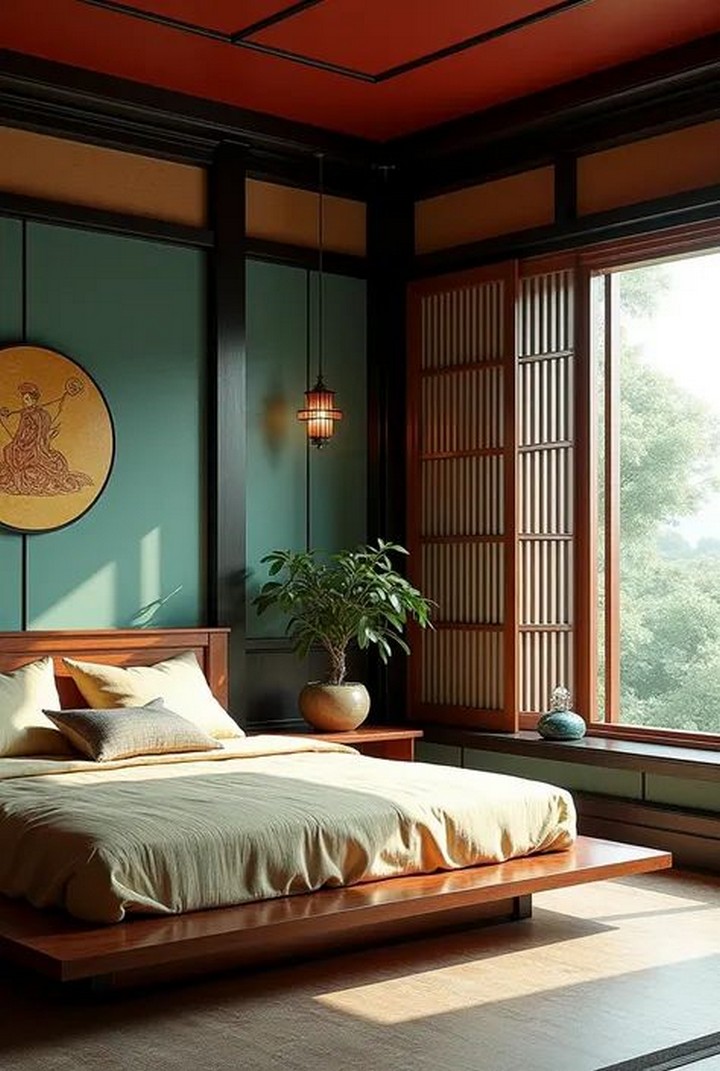
Chinese lacquerware techniques date back thousands of years, producing lustrous, durable finishes that improve with age. Emerald green lacquered furniture pieces—from chests to tables to decorative boxes bring rich color and glossy texture to interior spaces.
Traditional pieces feature intricate gold leaf designs against the emerald background, while contemporary interpretations might use cleaner lines and more minimal decoration. Either approach brings the sophistication of ancient craftsmanship into modern homes.
6. Emerald Silk Textiles
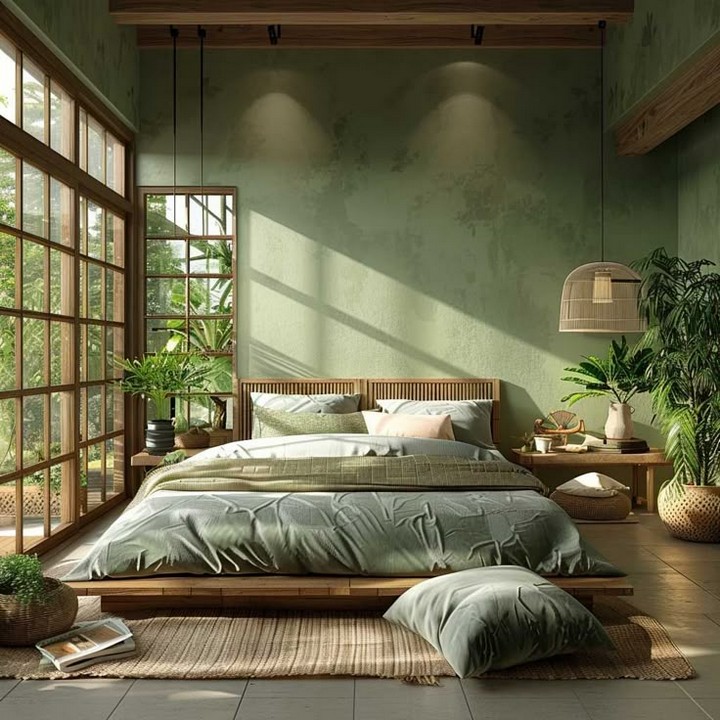
Silk production originated in China over 6,000 years ago, and emerald silk textiles continue to represent luxury and refinement. Consider emerald silk cushions embroidered with traditional motifs, table runners with gold thread accents, or framed silk panels as wall art.
The play of light on silk’s natural sheen creates a dynamic quality that brings emerald green to life. When using these rich textiles, allow them space to shine—too many competing patterns can diminish their impact.
7. Cloisonné Enamelwork in Emerald
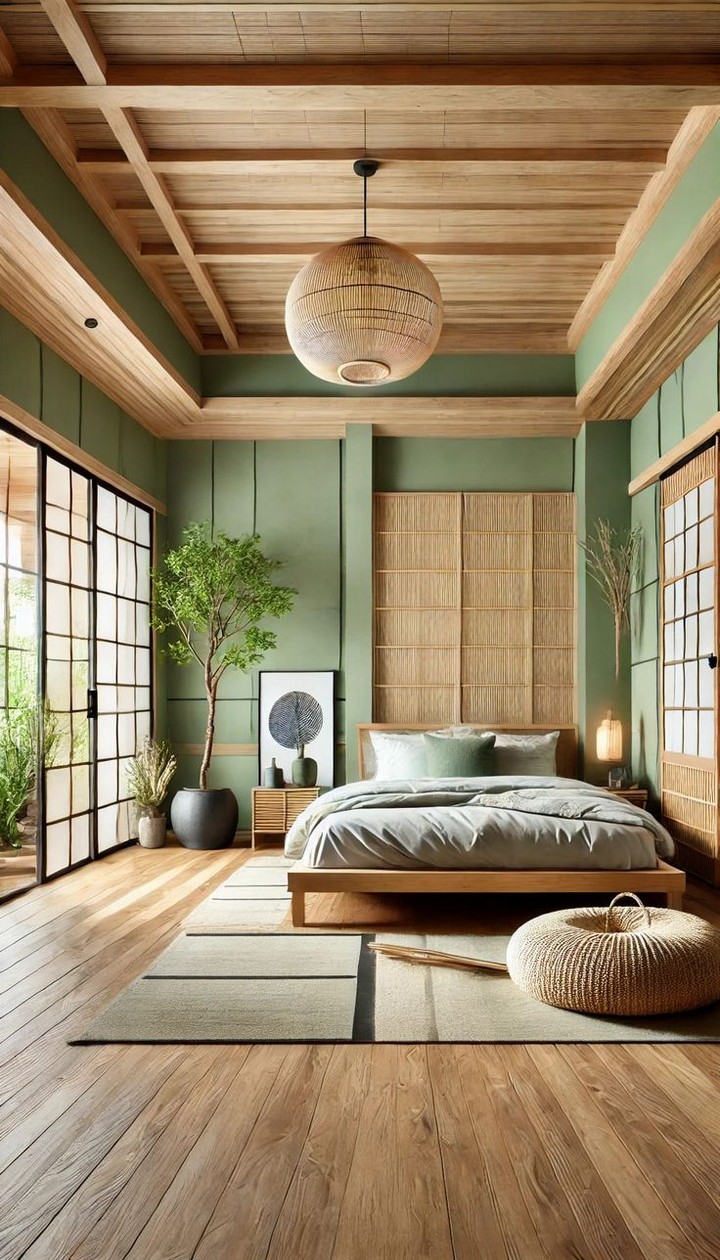
The intricate metalwork technique of cloisonné produces some of China’s most distinctive decorative arts. Emerald green often features prominently in these pieces, whether in vases, decorative boxes, or ornamental items.
The characteristic cell patterns created by the wire boundaries give these pieces their unique textural quality. Display cloisonné items where light can highlight the dimensional quality of the enamelwork and the vibrant emerald tones.
8. Emerald Dragon Motifs

As the most powerful symbol in Chinese mythology, dragon imagery pervades traditional decor. Emerald green dragons whether carved in wood, cast in metal, or embroidered on textiles bring auspicious energy and dramatic visual impact.
Traditional representations show dragons chasing pearls among clouds, while modern interpretations might abstract the form for a more subtle reference. Position these powerful symbols thoughtfully, as dragons are believed to activate energy in a space.
Sage and Celadon: Understated Elegance
9. Celadon Ceramic Collection
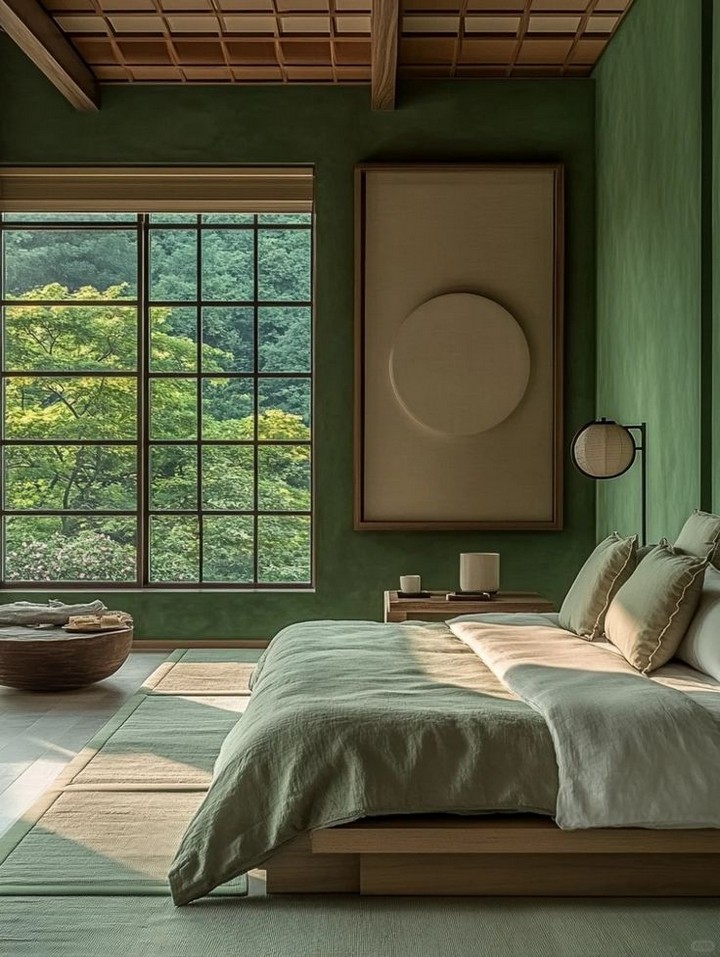
Beyond imperial jade pieces, celadon ceramics encompass a wide range of green-glazed pottery with subtle variations in tone and finish. Creating a curated collection of celadon pieces mixing antique finds with contemporary interpretations adds sophisticated depth to shelving or cabinet displays.
Look for the characteristic crackle in traditional celadon glazes, which adds textural interest to these understated pieces. Group items of varying heights and forms for a dynamic arrangement that honors Chinese display principles.
10. Sage Green Silk Wall Coverings
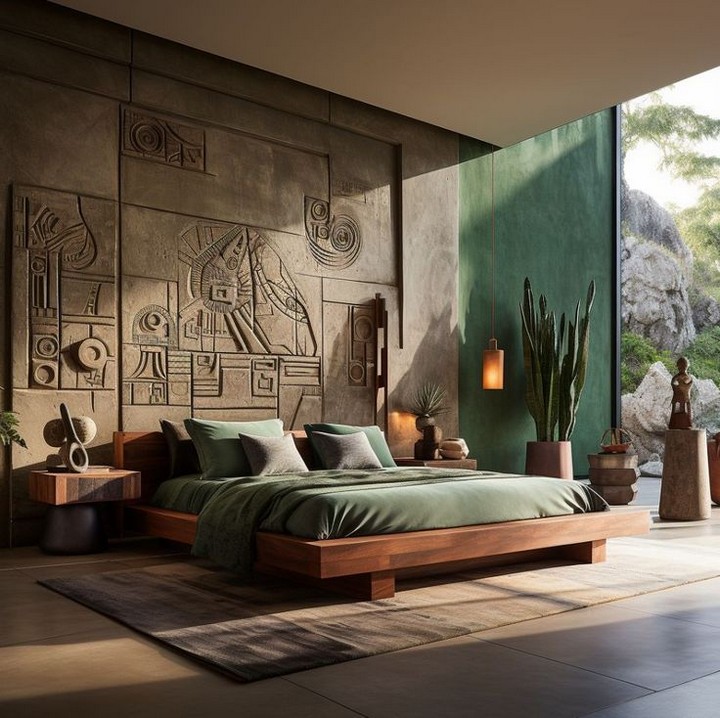
Silk wall coverings in sage green create luxurious, light-reflective surfaces that transform a room’s ambiance. Traditional hand-painted silk panels feature nature scenes with birds, blossoms, and mountains, while contemporary options might offer subtle textural patterns.
These delicate wall treatments work particularly well in bedrooms or formal dining spaces where they won’t face excessive wear. Their soft sheen catches light beautifully at different times of day, bringing gentle animation to your walls.
11. Sage-Toned Bamboo Elements
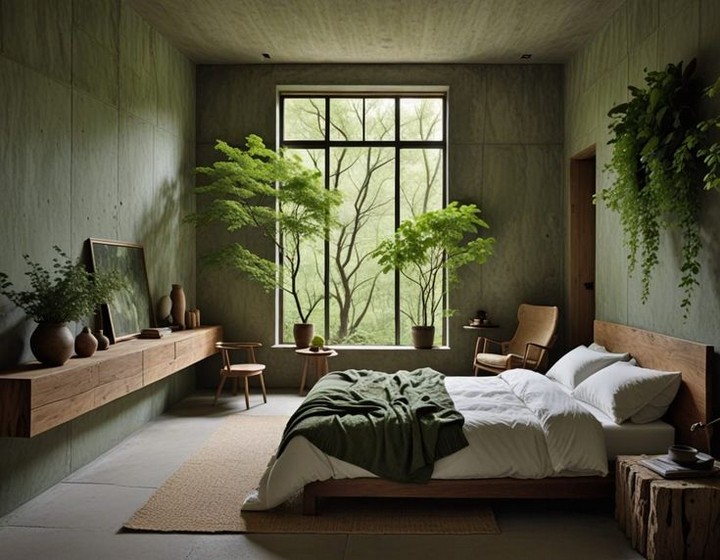
Bamboo has been used in Chinese construction and decor for millennia, prized for its strength, flexibility, and rapid growth. Sage-toned bamboo elements—whether in furniture, window coverings, or decorative objects bring natural texture and cultural significance.
Consider bamboo blinds in sage green, bamboo-framed artwork, or even a statement bamboo chair for an authentic touch. These elements connect interior spaces to nature while referencing traditional Chinese material preferences.
12. Celadon and White Porcelain Displays
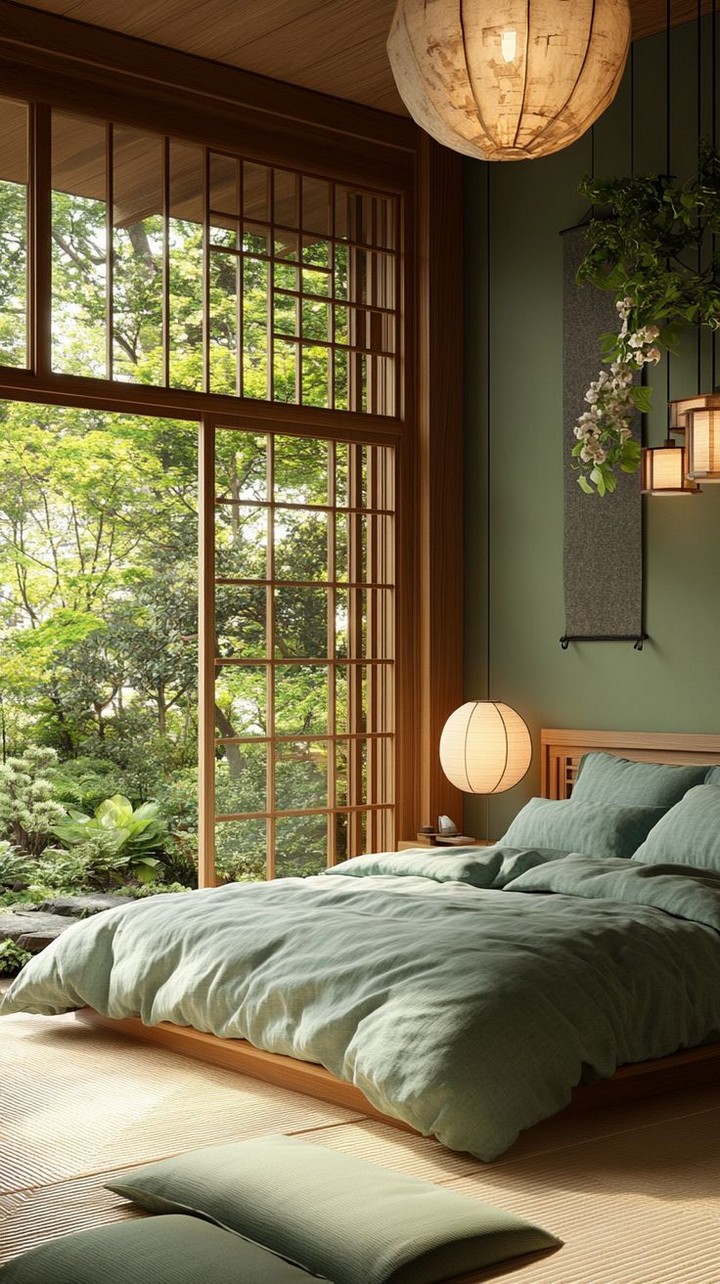
The contrast between celadon green and pristine white creates classic combinations in Chinese porcelain. Display collections that play with this relationship—white vases with celadon details, or vice versa for an arrangement that feels both intentional and historically informed.
Traditional designs often feature white porcelain with raised celadon decoration, especially floral motifs or auspicious symbols. Arrange these pieces asymmetrically (following Chinese display principles) rather than in rigid symmetrical groupings.
Tea Green: Natural Harmony
13. Tea-Dyed Textiles
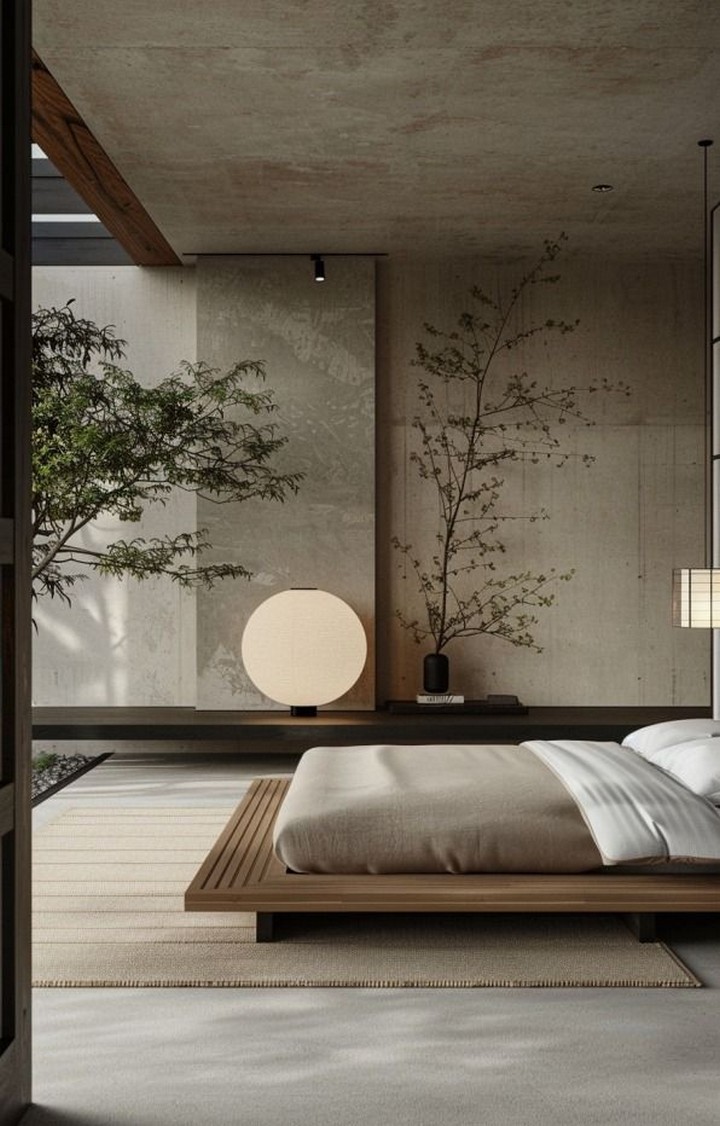
The natural greens of tea-dyed fabrics connect to China’s ancient tea culture while creating muted, harmonious color palettes. Consider tea-dyed linen curtains, bedding, or table linens for subtle green elements that bring warmth to a space.
These naturally-dyed textiles work beautifully with wood tones and other organic materials. Their variegated coloration a natural consequence of the dyeing process adds visual interest without overwhelming a space.
14. Tea Ceremony Spaces
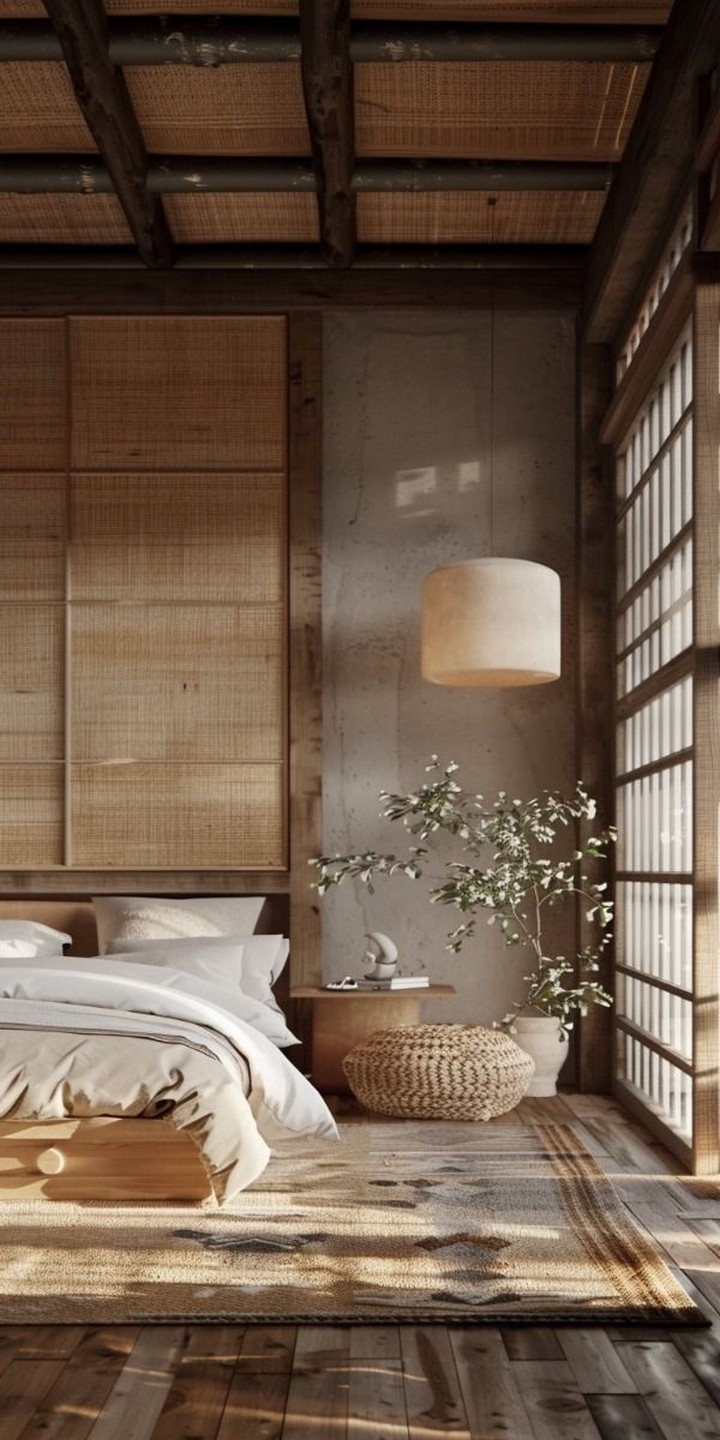
Creating a dedicated area for Chinese tea ceremony incorporates both functional design and aesthetic beauty. Tea green cushions around a low table, a carefully selected tea set in green-glazed pottery, and minimal decorative elements create a meditative space that honors this important cultural tradition.
Position this area near natural light if possible, as the changing qualities of daylight enhance the tea experience. Keep the space uncluttered, following the Chinese principle that emptiness is as important as what fills it.
15. Green Tea Botanical Art
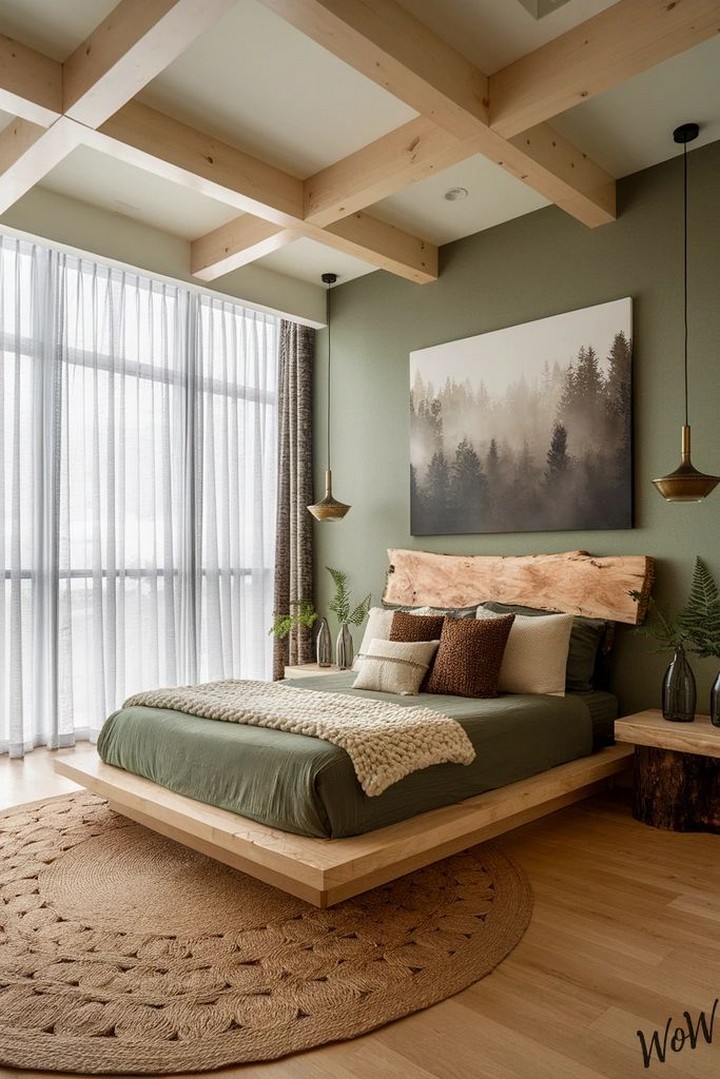
Botanical illustrations of tea plants whether antique prints, contemporary paintings, or photographs connect decorative elements to the living plants that have shaped Chinese culture. Frame these pieces simply to allow the detailed illustrations to be the focus.
Group tea-related botanical art with small shelves displaying actual tea implements for a thematic vignette that tells a cultural story. This approach brings narrative depth to your decor while maintaining visual coherence.
16. Tea Green Meditation Corner
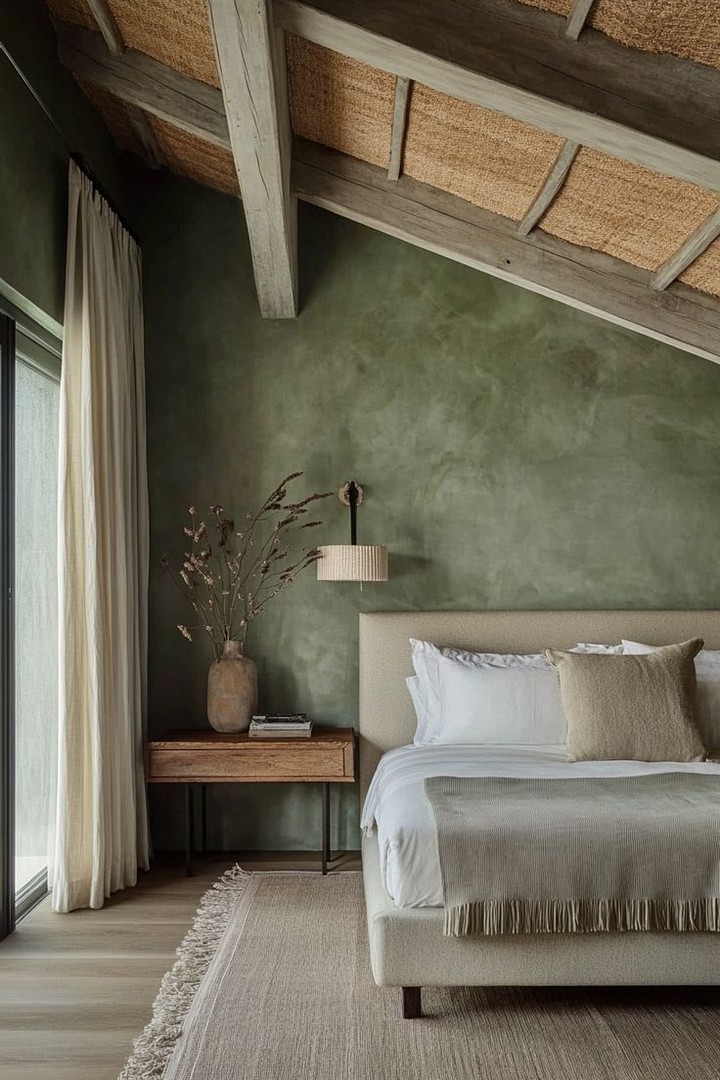
Chinese design has always embraced spaces for contemplation. Create a meditation corner with tea green floor cushions, a simple low table, and minimal decorative elements—perhaps a single perfect stone or small plant to embody the philosophy of meditation in physical form.
This space should feel separate from the busyness of daily life, even if it’s just a corner of a larger room. The use of tea green creates a visual transition that signals a shift to a more contemplative mindset.
Pine and Forest Greens: Connection to Nature
17. Scholar’s Garden Elements
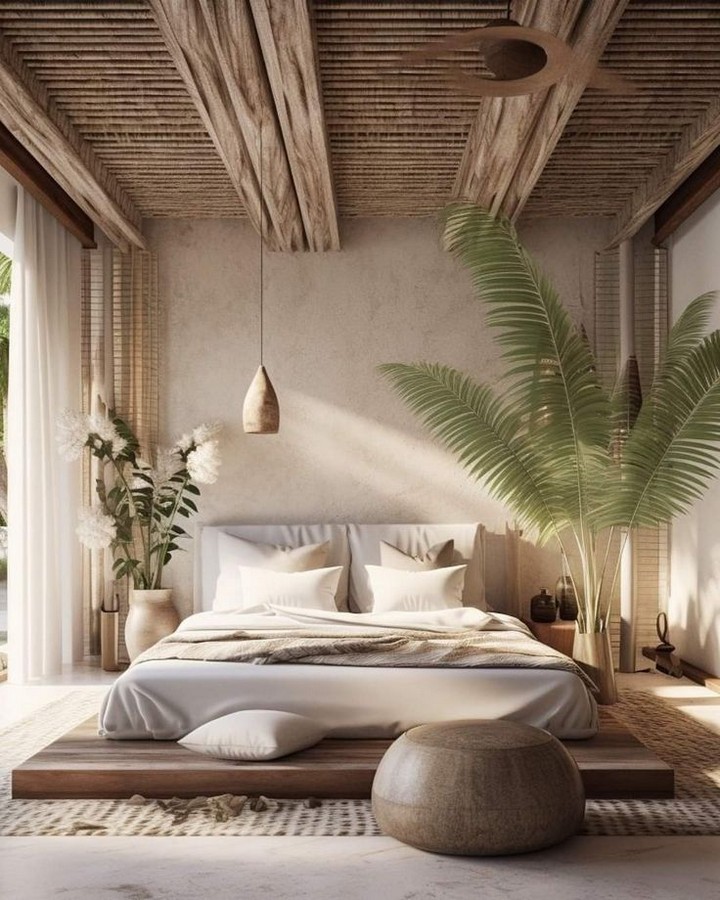
The Chinese scholar’s garden tradition with its careful balance of architecture, stone, water, and plants offers rich inspiration for contemporary spaces. Forest green architectural elements like moon gates, pavilion forms, or decorative woodwork bring this tradition indoors.
Even in small spaces, you can reference these classical gardens with a carefully placed forest green screen, a miniature indoor landscape, or architectural photographs that capture the essence of these historical designs.
18. Pine Motifs in Artwork
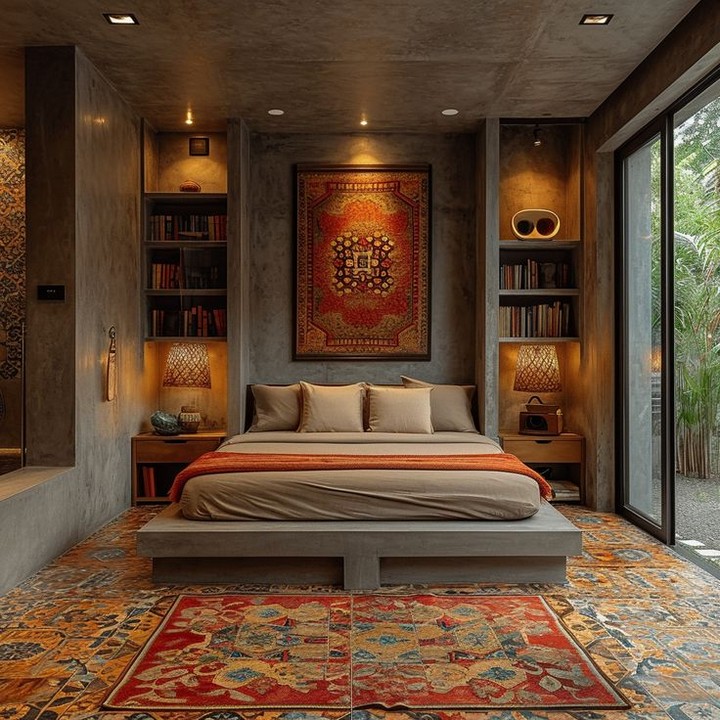
Pine trees represent longevity and steadfastness in Chinese symbolism. Artwork featuring pine motifs whether traditional brush paintings, woodblock prints, or contemporary interpretations brings these auspicious meanings alongside beautiful forest green tones.
Traditional Chinese landscape paintings (shanshui) often feature dramatic pine trees clinging to mountainsides, symbolizing resilience and endurance. These pieces bring philosophical depth alongside their decorative quality.
19. Carved Pine Wood Furnishings
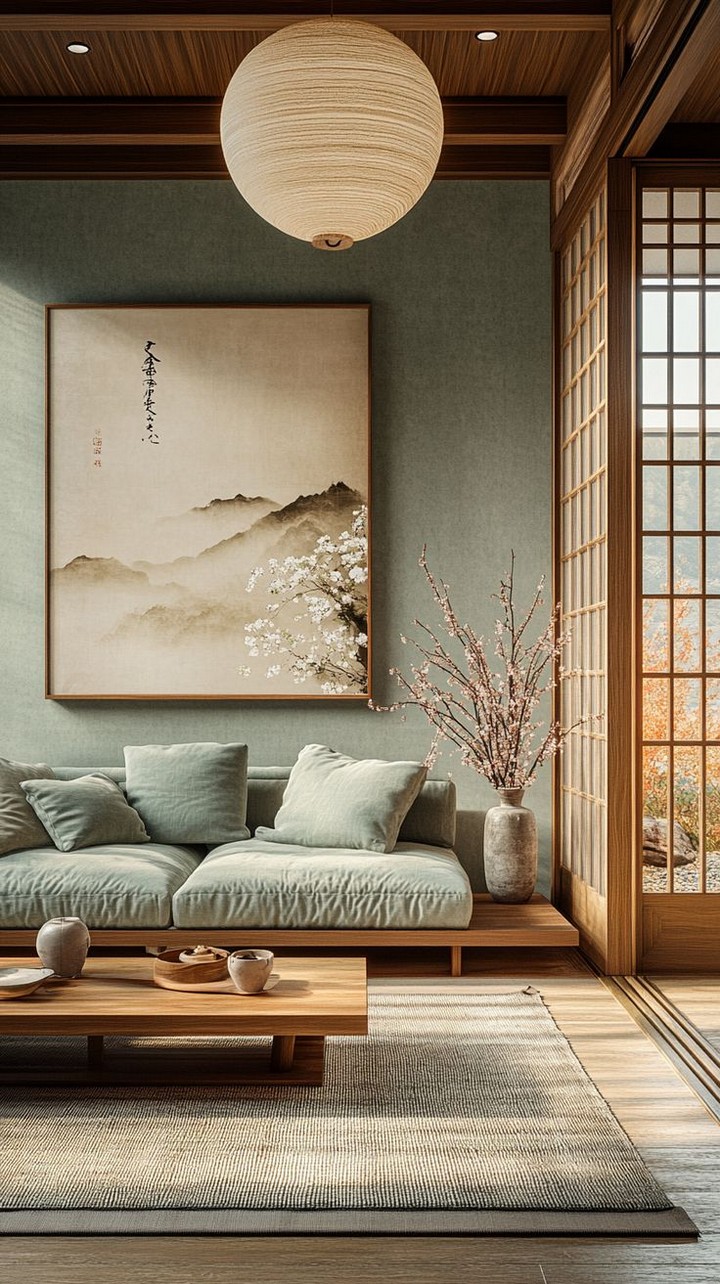
Furniture crafted from pine wood and finished to emphasize its natural green undertones creates authentic connections to Chinese craftsmanship traditions. Look for pieces with traditional joinery techniques rather than nails or screws a hallmark of quality Chinese woodworking.
These pieces often feature carved details like cloud scrolls, geometric lattice patterns, or symbolic motifs. Position these substantial pieces where they have room to be appreciated as both functional items and artistic statements.
20. Natural Stone Elements
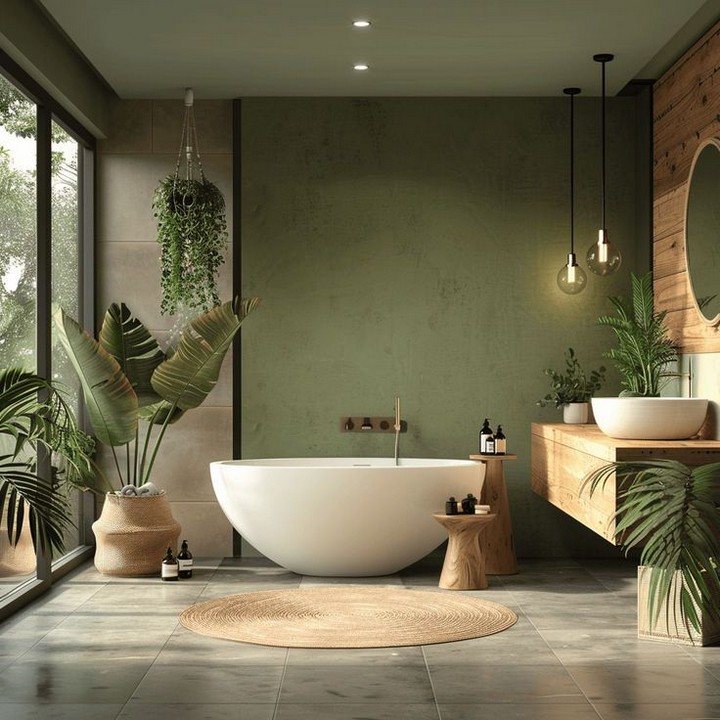
Chinese garden design places enormous importance on carefully selected stones, which are considered nature’s sculptures. Incorporate forest green stone elements—like serpentine vessels, jade plants, or scholar’s rocks to bring this tradition into contemporary spaces.
Display these natural elements on wooden stands (traditional in Chinese presentation) to elevate their importance visually. The contrast between polished and rough surfaces creates textural interest that invites touch and contemplation.
Mint and Seafoam: Fresh Interpretations
21. Mint Green Chinoiserie
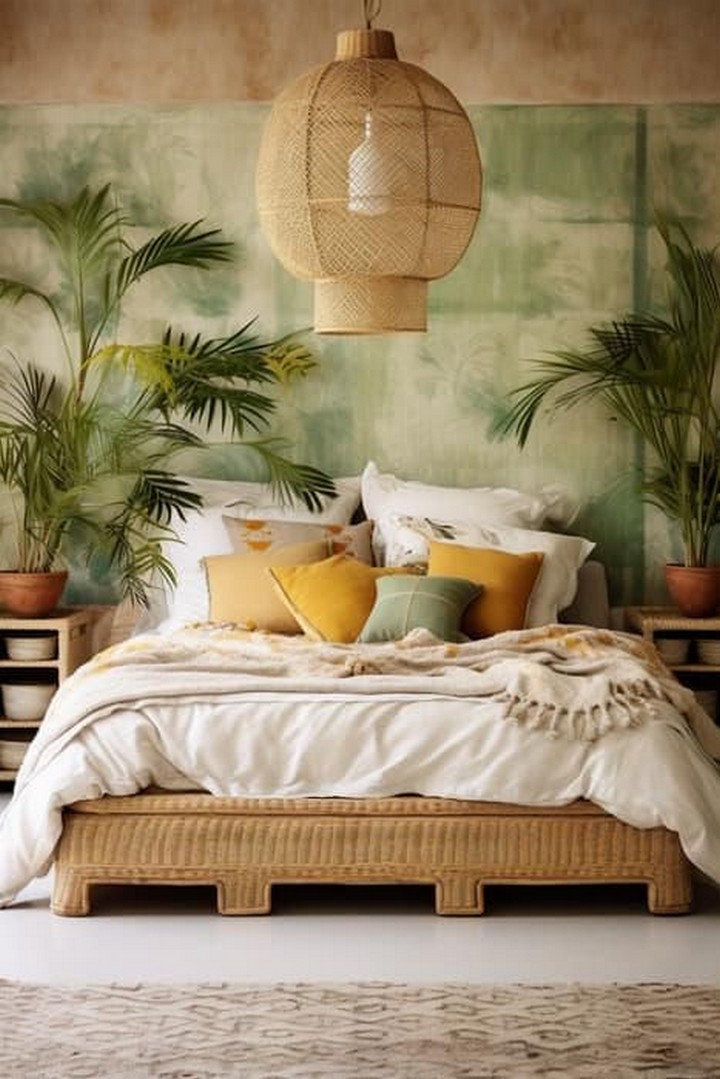
Chinoiserie the European interpretation of Chinese design offers a fusion approach to Eastern aesthetics. Mint green chinoiserie patterns on wallpaper, fabrics, or decorative objects provide a lighthearted reference to Chinese motifs without strict adherence to traditional color schemes.
These designs typically feature pagodas, exotic birds, flowering trees, and fanciful landscapes in a more whimsical interpretation than authentic Chinese design. This style works particularly well in spaces where you want a fresh, feminine energy with cultural references.
22. Seafoam Lacquer Finishes
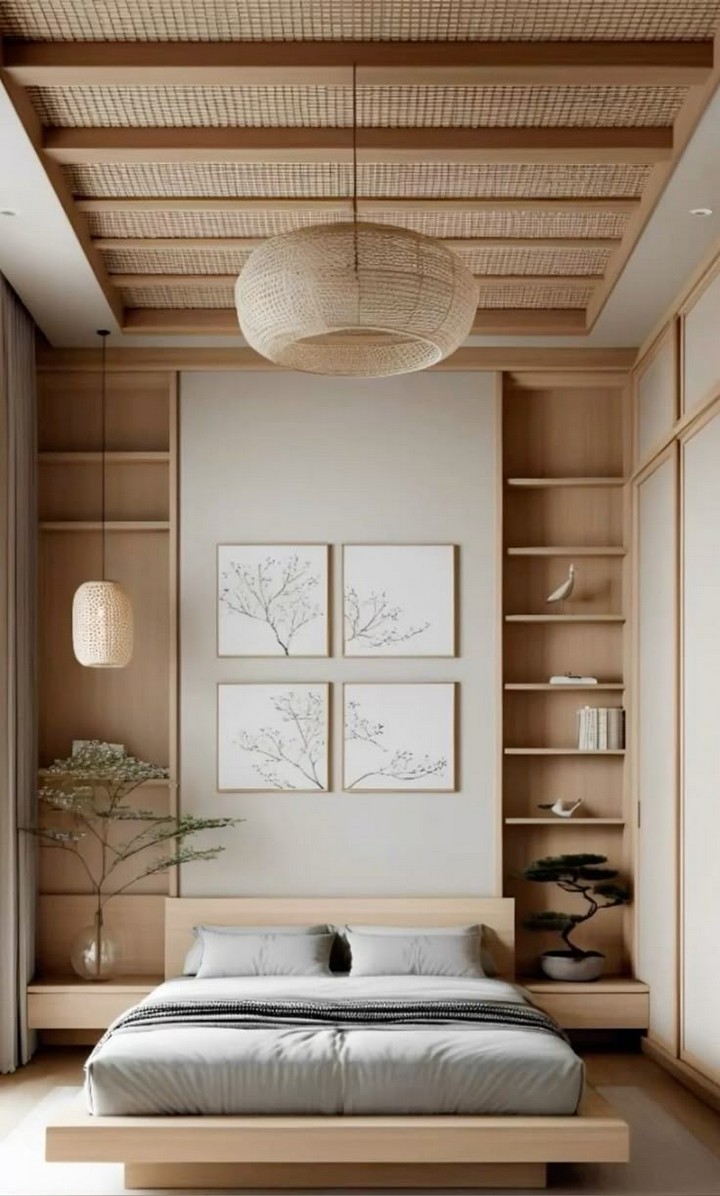
Traditional Chinese lacquer techniques reimagined with contemporary seafoam green finishes create pieces that bridge traditional craftsmanship and modern aesthetics. Consider side tables, decorative boxes, or trays with this fresh finish.
These pieces work particularly well in transitional design schemes where you’re balancing traditional and contemporary elements. Their glossy surfaces reflect light beautifully, bringing animation to corner spaces or shelving arrangements.
23. Mint and Gold Leaf Accents
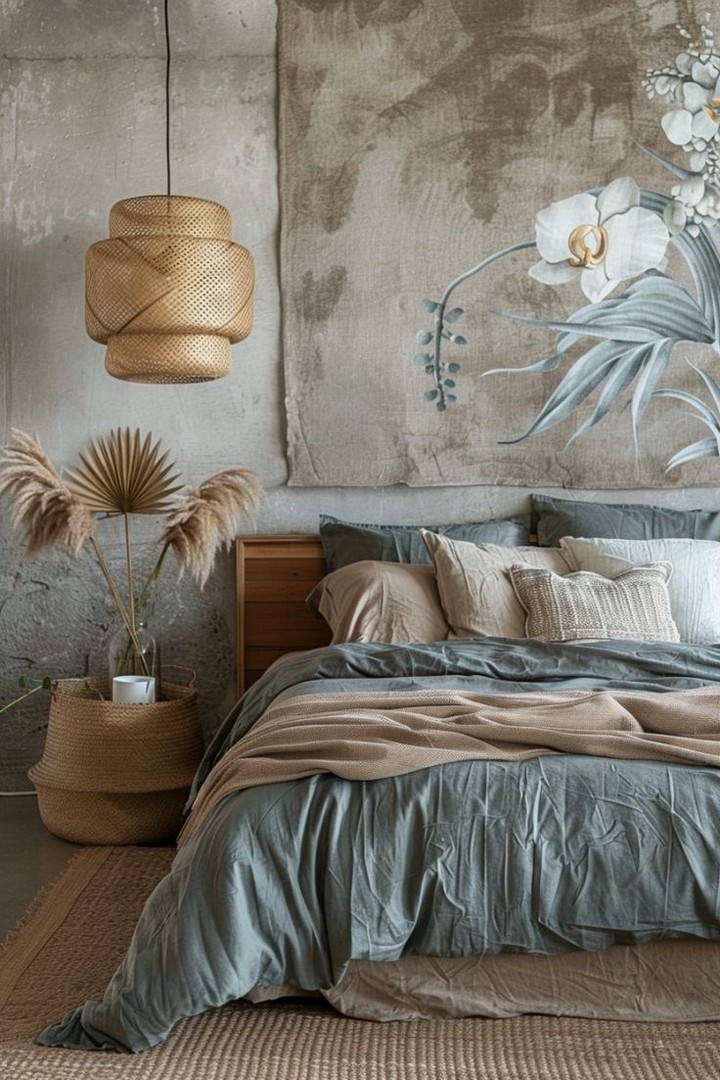
The combination of mint green with gold leaf detailing references imperial Chinese color combinations in a fresh, updated way. Look for decorative objects, picture frames, or small furniture pieces that pair these colors for elegant accents throughout your space.
This color combination works particularly well in spaces with natural light, as the changing daylight brings different qualities to both the mint green and the reflective gold surfaces throughout the day.
24. Contemporary Chinese Watercolors

Traditional Chinese painting techniques applied to contemporary subjects with mint or seafoam color palettes create art that honors traditional methods while feeling thoroughly modern. These pieces can serve as beautiful bridges between traditional Chinese decor elements and contemporary furnishings.
Look for artists who maintain the spontaneous quality of traditional brush painting while exploring fresh subject matter or abstracted forms. Frame these pieces simply, often with wide mats, to give the artwork visual space to breathe.
Olive and Moss: Earthy Sophistication
25. Olive Green Silk Embroidery
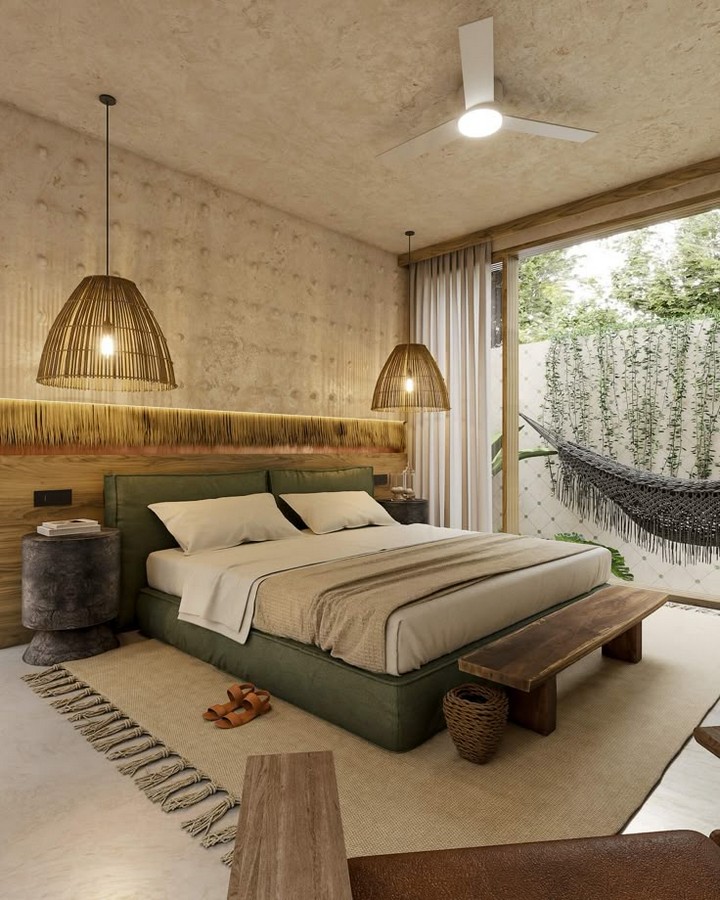
Chinese silk embroidery reaches its highest expression in pieces that capture the subtle variations of nature. Olive green embroidered panels—whether antique or contemporary bring extraordinary craftsmanship and textural richness to wall displays.
Traditional subjects include landscape scenes, birds among flowering branches, or symbolic motifs like bats (representing good fortune) or pomegranates (representing fertility). Frame these textiles properly under glass to protect them from dust and fading.
26. Moss Green Ceramic Garden Stools
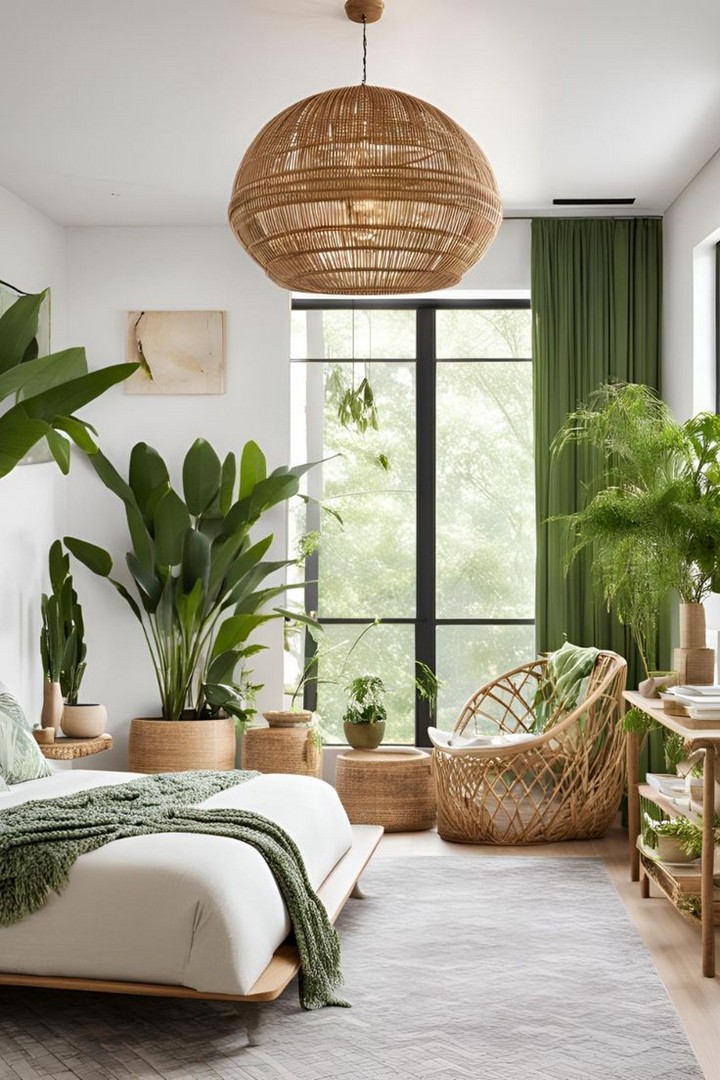
Chinese ceramic garden stools have become design classics worldwide. Moss green versions of these versatile pieces function as side tables, extra seating, or decorative elements in almost any room.
Traditional designs feature pierced patterns, drum shapes, or barrel forms with raised decoration. Position these sturdy pieces where they can serve multiple functions—perhaps between two chairs as both table and potential extra seat for guests.
27. Bronze Patina Accents
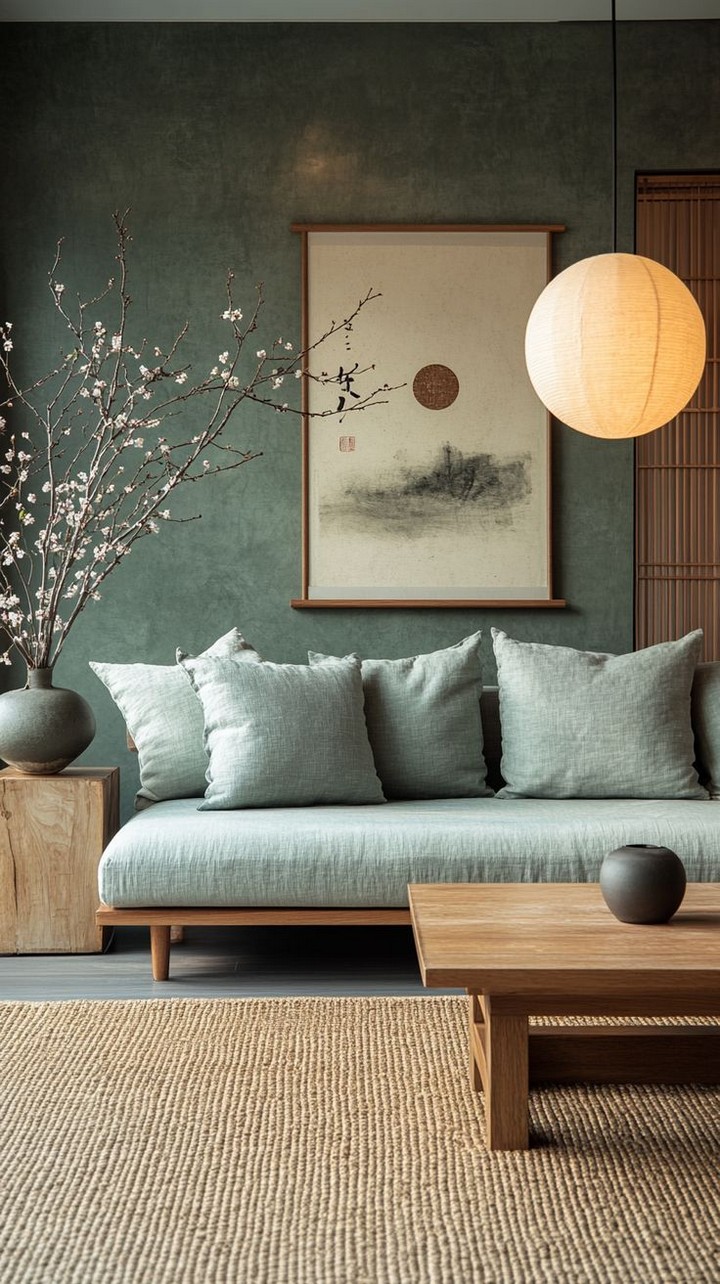
The distinctive green patina that develops on bronze vessels and sculptures connects to China’s ancient bronze-casting traditions dating back to the Shang Dynasty. Whether authentic antiques or contemporary pieces with artificially developed patina, these elements bring historical depth to your decor.
Traditional forms include ritual vessels, incense burners, or animal sculptures with symbolic significance. Display these substantial pieces where they have visual space around them to be appreciated as artistic and historical objects.
28. Olive Wood Carvings
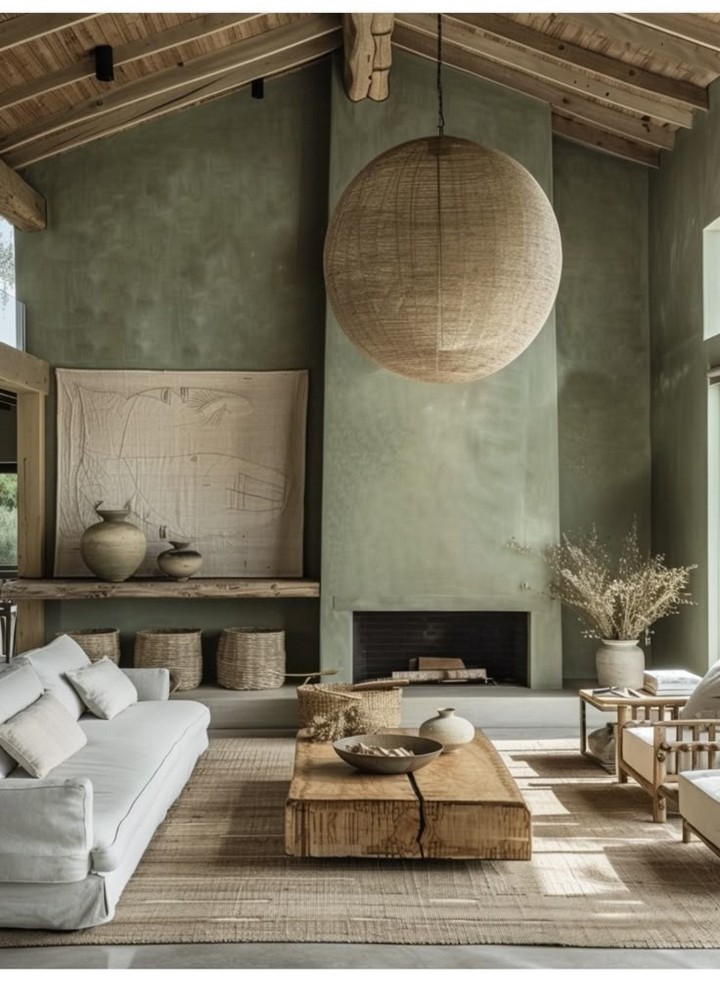
Wooden sculptures and decorative elements finished in olive-toned stains reference traditional Chinese woodcarving while bringing earthy sophistication to interior spaces. Look for pieces with traditional subjects like Buddha figures, wise men, or mythological creatures.
These sculptural elements work well as transition pieces between different furniture groupings or as focal points on shelving arrangements. Their earthy tones ground more decorative elements while adding textural variety.
Malachite and Teal: Dramatic Impact
29. Malachite-Inspired Table Surfaces
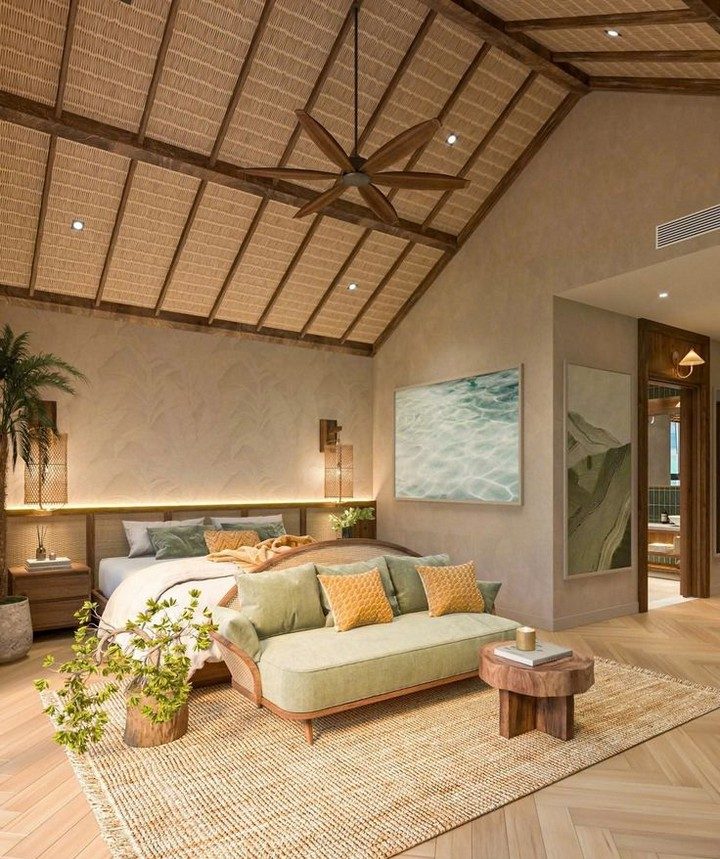
While true malachite is rare and precious, malachite-inspired patterns in deep green and black create dramatic table surfaces with Chinese-inspired forms. Consider a side table with malachite-patterned inlay or a decorative box with this distinctive swirling pattern.
These striking patterns work best as featured elements rather than background allow them visual space and pair them with simpler designs to avoid competing patterns. Their distinctive veining creates natural focal points in any arrangement.
30. Teal Cloisonné Collection
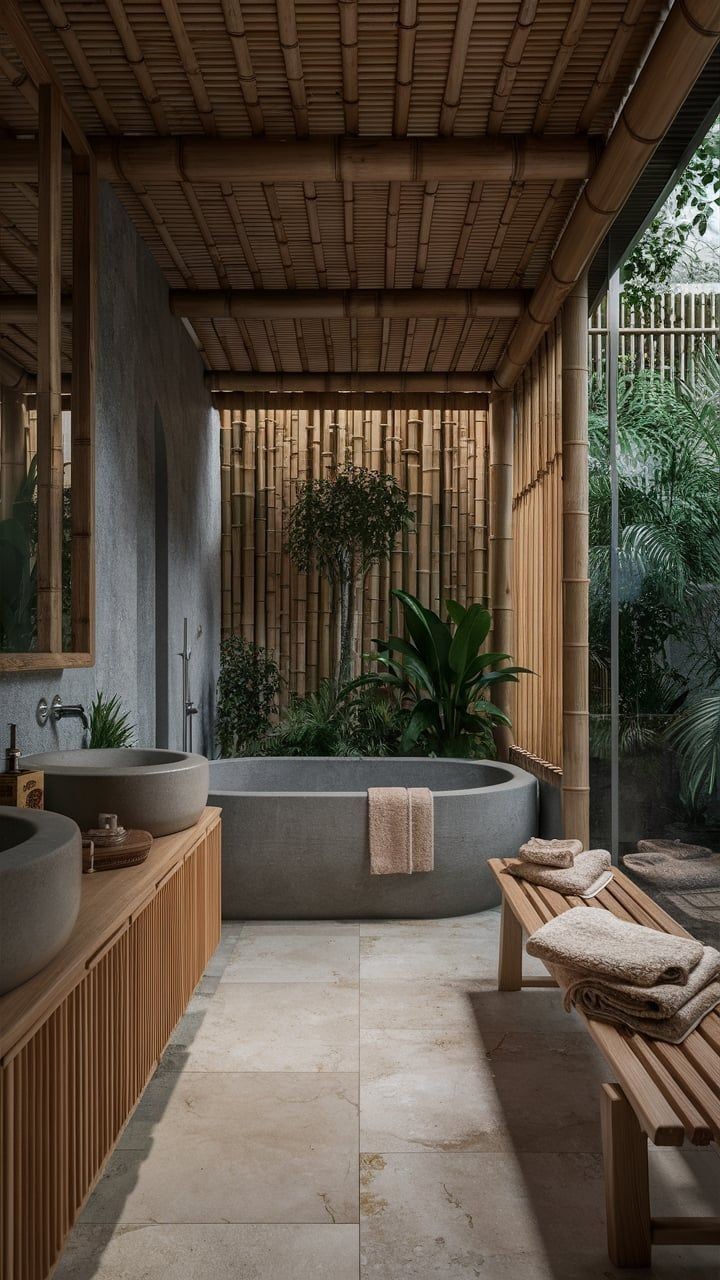
While traditional cloisonné often features rich cobalt blues, teal interpretations create a fresh approach to this distinctive Chinese art form. Collect teal cloisonné pieces in varying scales from large statement vases to small decorative items for displays with cultural significance and visual coherence.
The characteristic metal wire boundaries between color cells give these pieces their unique textural quality. Position them where light will highlight both the dimensional quality and the vibrant teal coloration.
31. Deep Green Temple Jars
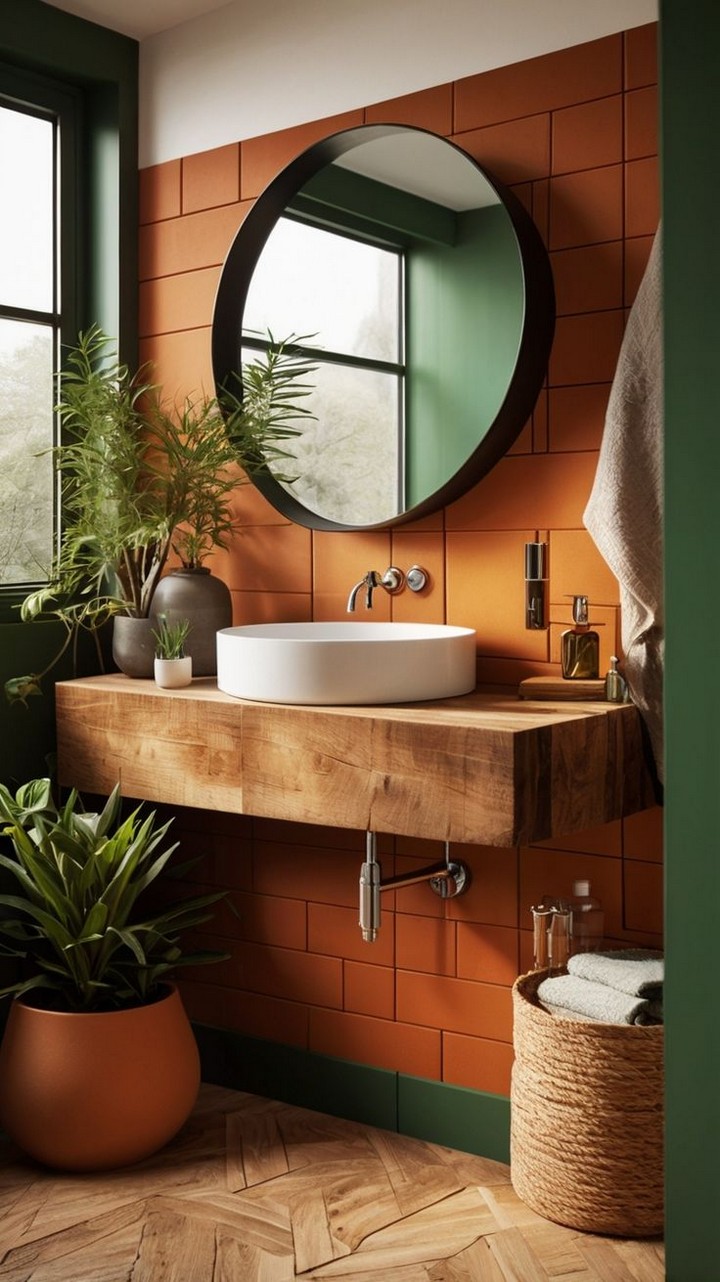
Temple jars with their distinctive domed lids and rounded bodies have been part of Chinese decorative arts for centuries. Deep green versions of these classic forms create dramatic focal points on consoles, mantels, or dining tables.
Traditional designs feature hand-painted decoration including landscapes, floral motifs, or mythological scenes. Use these substantial pieces as anchoring elements in decorative groupings, often positioning them asymmetrically rather than in matched pairs.
32. Teal Chinese Export Porcelain
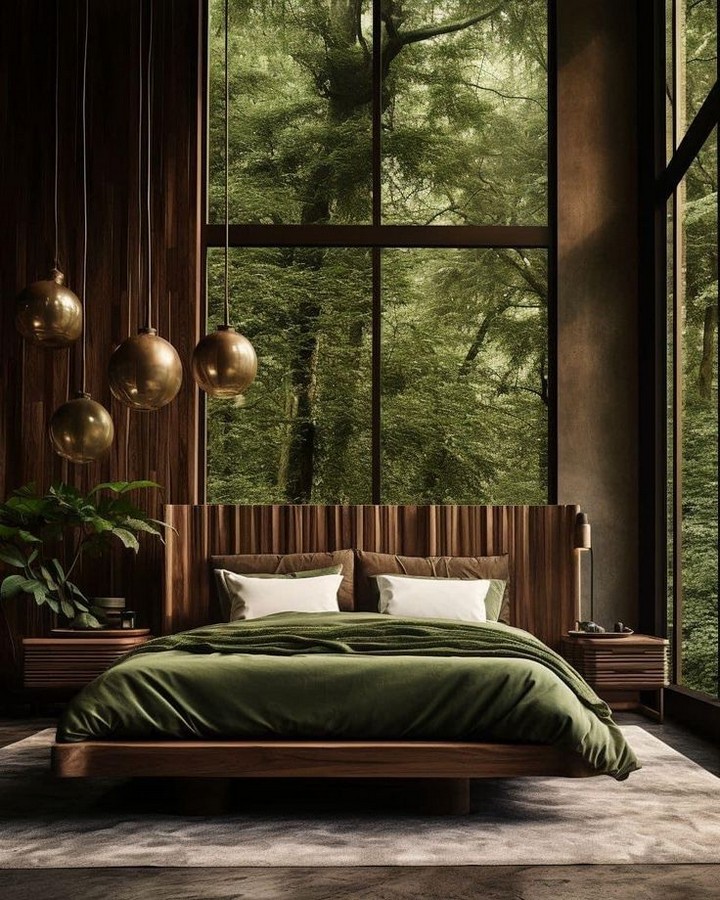
Chinese export porcelain created specifically for Western markets during the 17th to 19th centuries offers a fascinating blend of Eastern artistry and Western taste. Teal pieces from this tradition (or contemporary interpretations) bring historical context alongside beautiful color.
These pieces typically feature garden scenes, exotic birds, or floral patterns rendered in distinctive brushwork. Display them in cabinets with interior lighting to highlight their translucent quality, or use them as sophisticated table centerpieces.
Contemporary Green Chinese Fusion
33. Abstract Chinese Brush Painting in Green
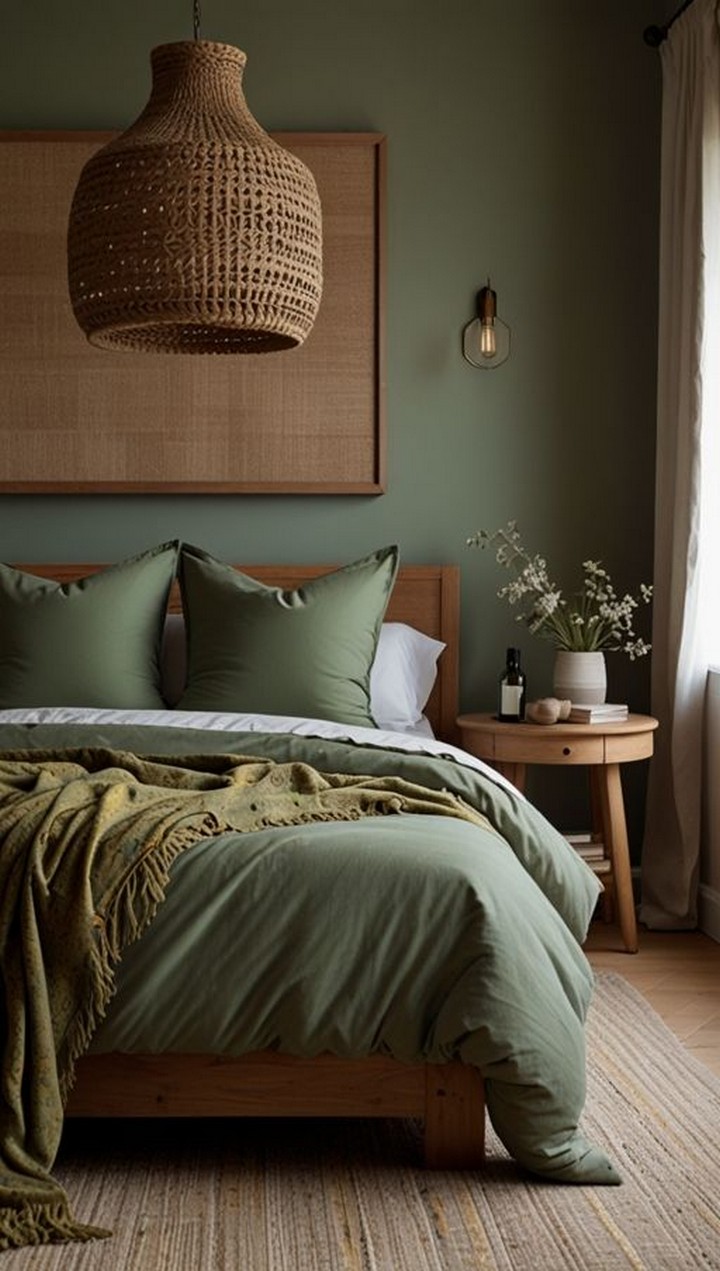
Traditional Chinese brush painting techniques applied to abstract compositions in varied green tones create contemporary art with cultural roots. These pieces bring the spontaneity and energy of brush painting while fitting seamlessly into modern interiors.
Look for works that maintain the characteristic “breath resonance” quality of traditional painting where the artist’s energy is visible in each brushstroke while exploring contemporary forms. These pieces work well as transitions between more traditional Chinese elements and modern furnishings.
34. Modern Interpretations of Jade Bi Discs
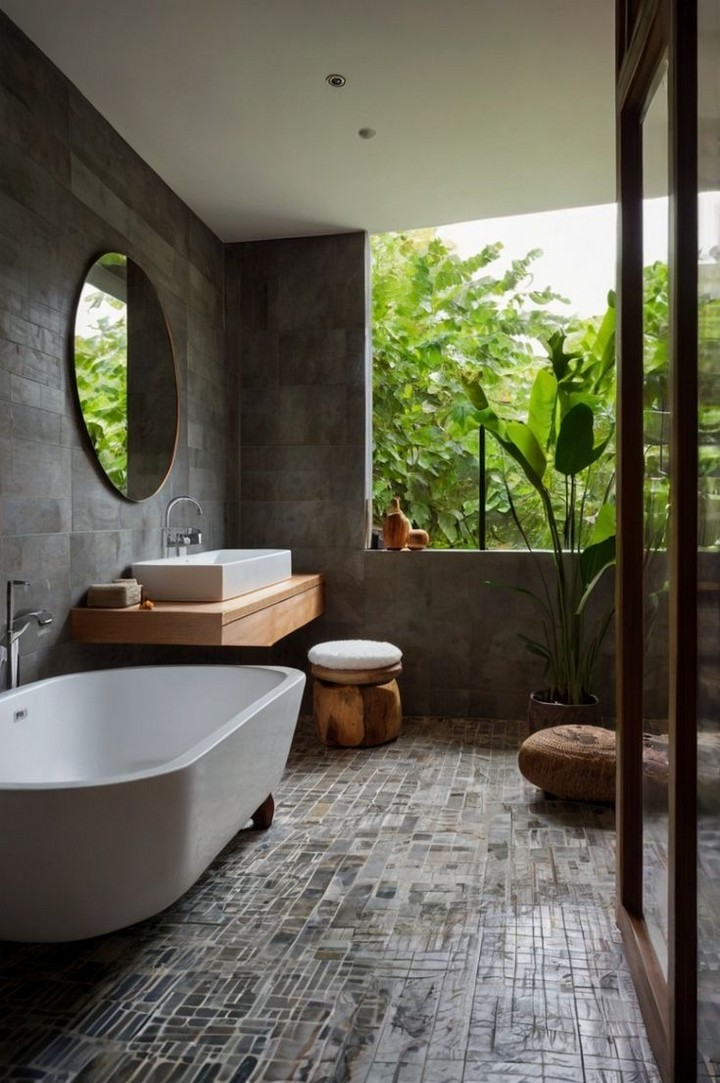
The circular jade bi disc with its center hole has been a significant form in Chinese art since neolithic times. Contemporary interpretations whether in actual jade or jade-colored materials reference this important symbol while functioning as thoroughly modern decor elements.
Consider wall installations of abstract bi disc forms, sculptural groupings on consoles, or even lighting fixtures that reference this iconic shape. These elements connect to Chinese cultural history while maintaining contemporary relevance.
Bringing Green Chinese Elegance into Your Home
The rich tradition of green in Chinese decor offers endless inspiration for contemporary spaces whether you’re creating a fully immersive Chinese-inspired interior or thoughtfully incorporating cultural elements into your existing design scheme. Through the 34 approaches we’ve explored, green emerges as much more than just a color choice it becomes a bridge to cultural history, philosophical concepts, and timeless aesthetic principles.
The elegance of green Chinese decor lies in its perfect balance between natural inspiration and human artistry, between meaningful symbolism and visual beauty. By thoughtfully incorporating these elements into your home, you create spaces that not only please the eye but also connect to thousands of years of design wisdom.
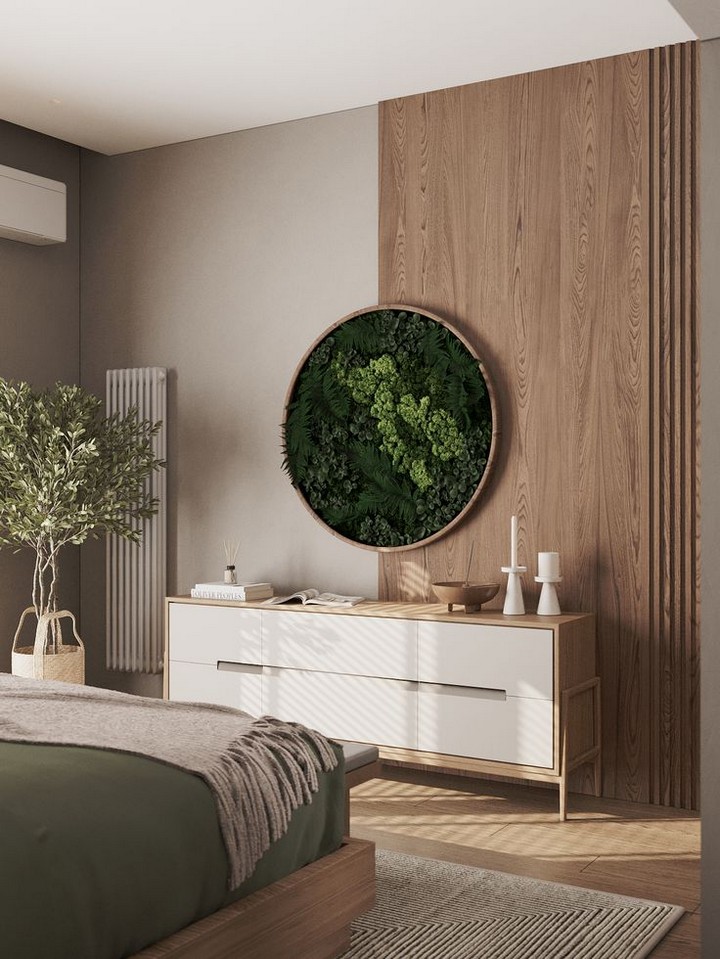
As you explore your own journey with green Chinese decor elements, consider which aspects resonate most deeply with you the philosophical underpinnings, the craftsmanship traditions, the symbolic language, or simply the visual harmony these elements bring to your space. The most successful interiors always reflect a personal connection to the design traditions they reference.
We’d love to hear how you’ve incorporated green Chinese decor into your own spaces! With these concepts, you can create a home that honors tradition while feeling fresh and inviting. 福 (Fú – “Good fortune”) to your decorating journey! 🏮🎋




